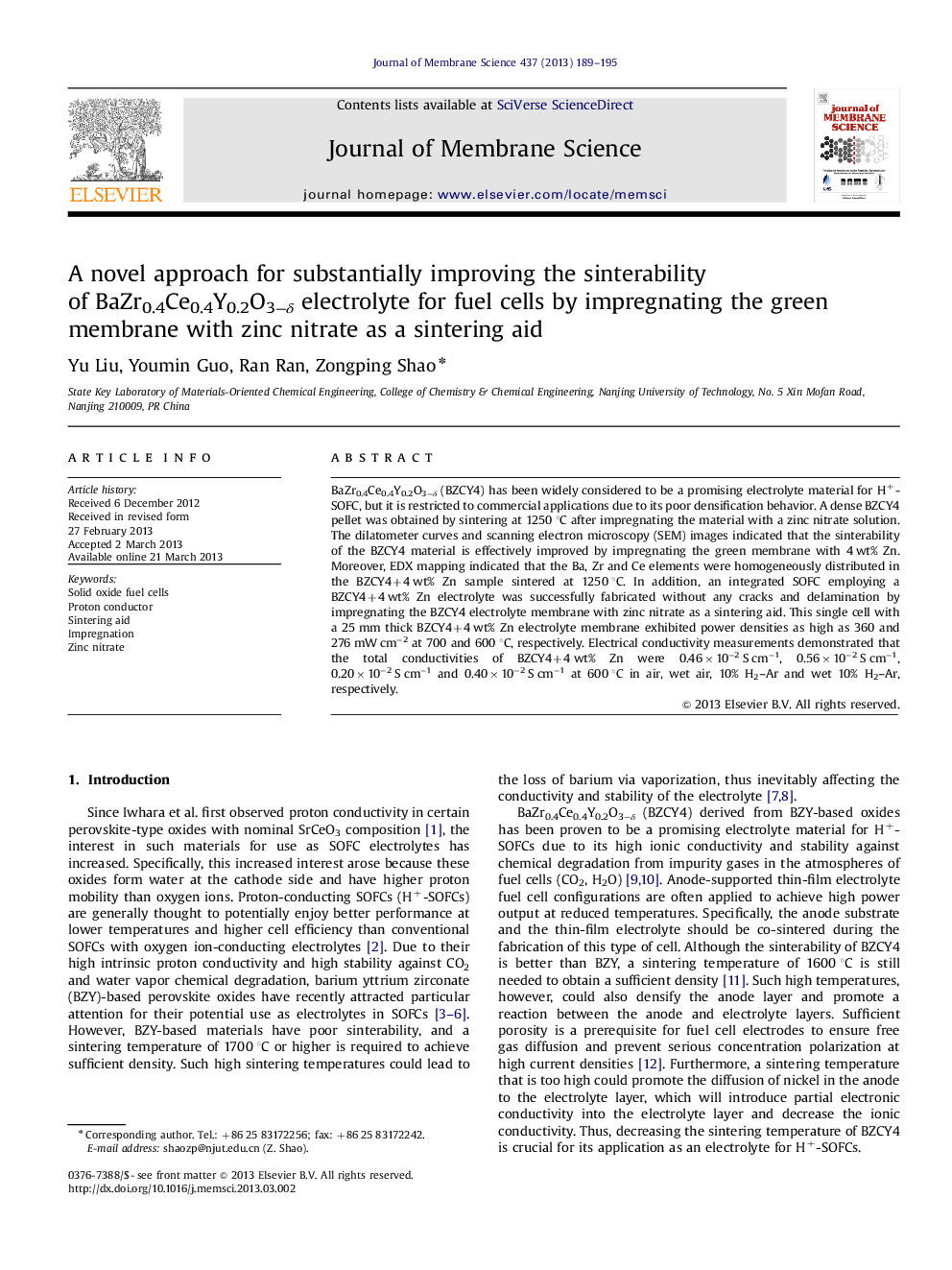| کد مقاله | کد نشریه | سال انتشار | مقاله انگلیسی | نسخه تمام متن |
|---|---|---|---|---|
| 634310 | 1456062 | 2013 | 7 صفحه PDF | دانلود رایگان |

• The sintering aid was added into the green pellets by impregnation method.
• BZCY4 showed an excellent sintering ability after introduction of zinc nitrate.
• An integrated SOFC with BZCY4+4 wt% Zn electrolyte was fabricated without cracks.
• Zinc nitrate as sintering aid did not obstructed the peak power density of SOFC.
BaZr0.4Ce0.4Y0.2O3−δ (BZCY4) has been widely considered to be a promising electrolyte material for H+-SOFC, but it is restricted to commercial applications due to its poor densification behavior. A dense BZCY4 pellet was obtained by sintering at 1250 °C after impregnating the material with a zinc nitrate solution. The dilatometer curves and scanning electron microscopy (SEM) images indicated that the sinterability of the BZCY4 material is effectively improved by impregnating the green membrane with 4 wt% Zn. Moreover, EDX mapping indicated that the Ba, Zr and Ce elements were homogeneously distributed in the BZCY4+4 wt% Zn sample sintered at 1250 °C. In addition, an integrated SOFC employing a BZCY4+4 wt% Zn electrolyte was successfully fabricated without any cracks and delamination by impregnating the BZCY4 electrolyte membrane with zinc nitrate as a sintering aid. This single cell with a 25 mm thick BZCY4+4 wt% Zn electrolyte membrane exhibited power densities as high as 360 and 276 mW cm−2 at 700 and 600 °C, respectively. Electrical conductivity measurements demonstrated that the total conductivities of BZCY4+4 wt% Zn were 0.46×10−2 S cm−1, 0.56×10−2 S cm−1, 0.20×10−2 S cm−1 and 0.40×10−2 S cm−1 at 600 °C in air, wet air, 10% H2–Ar and wet 10% H2–Ar, respectively.
Journal: Journal of Membrane Science - Volume 437, 15 June 2013, Pages 189–195